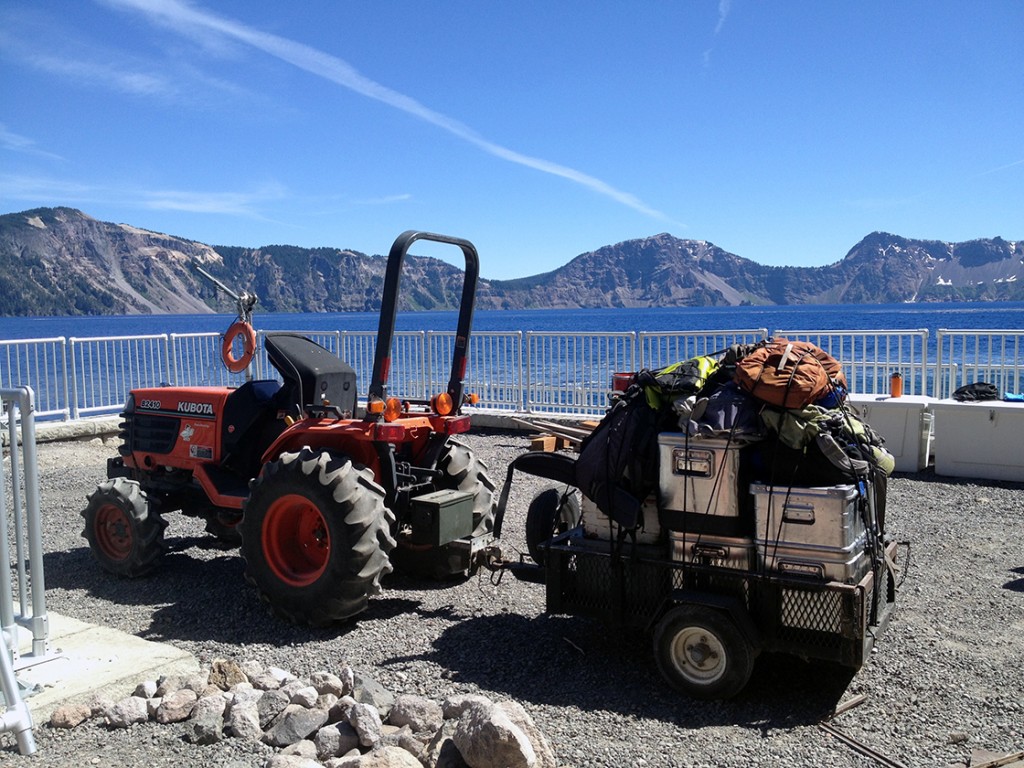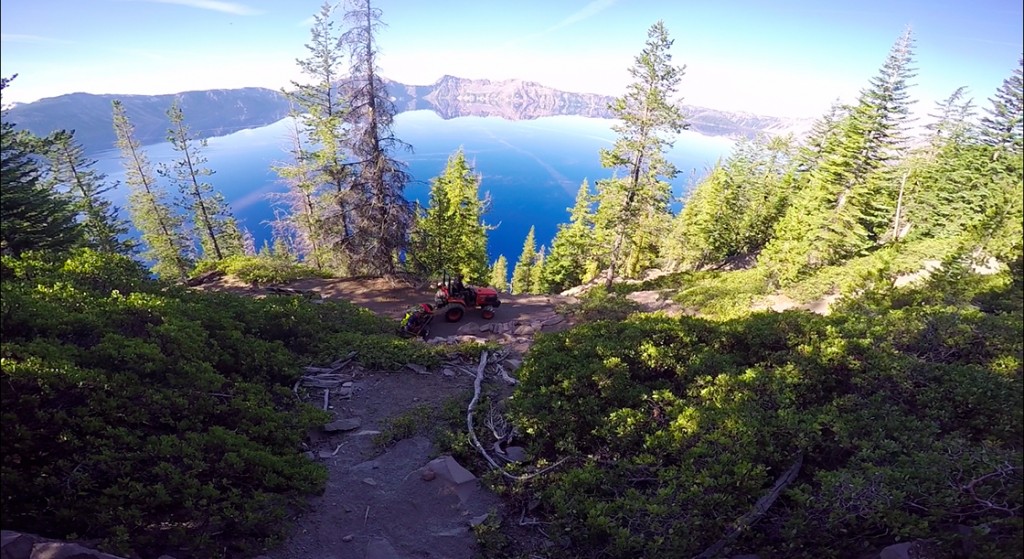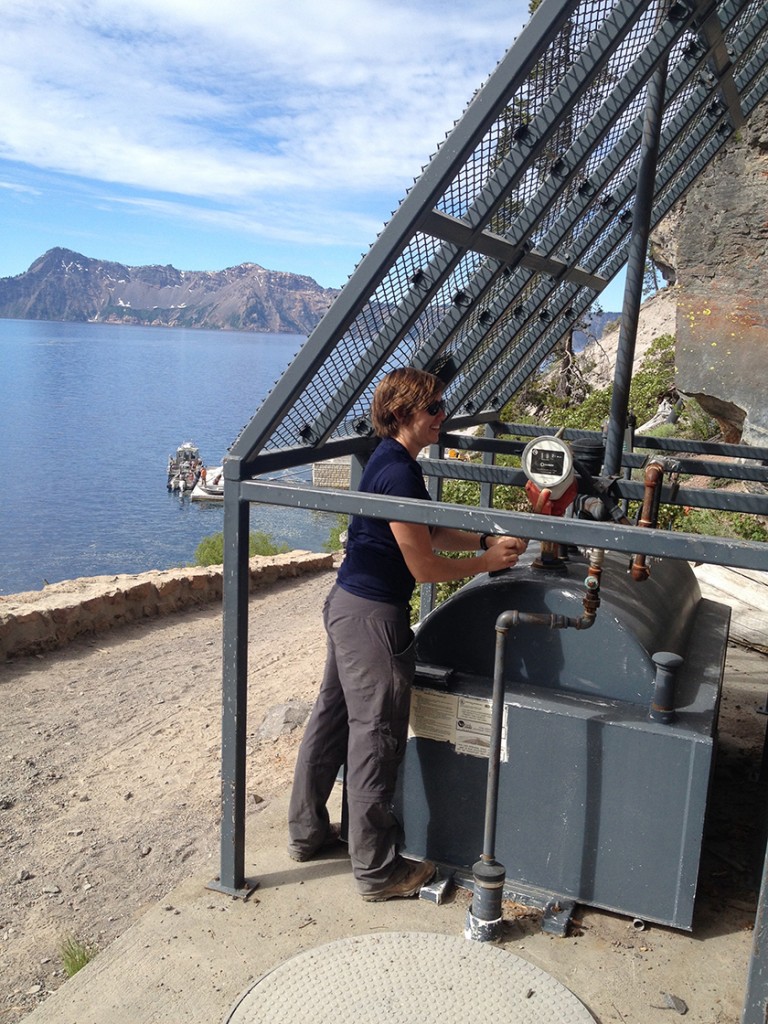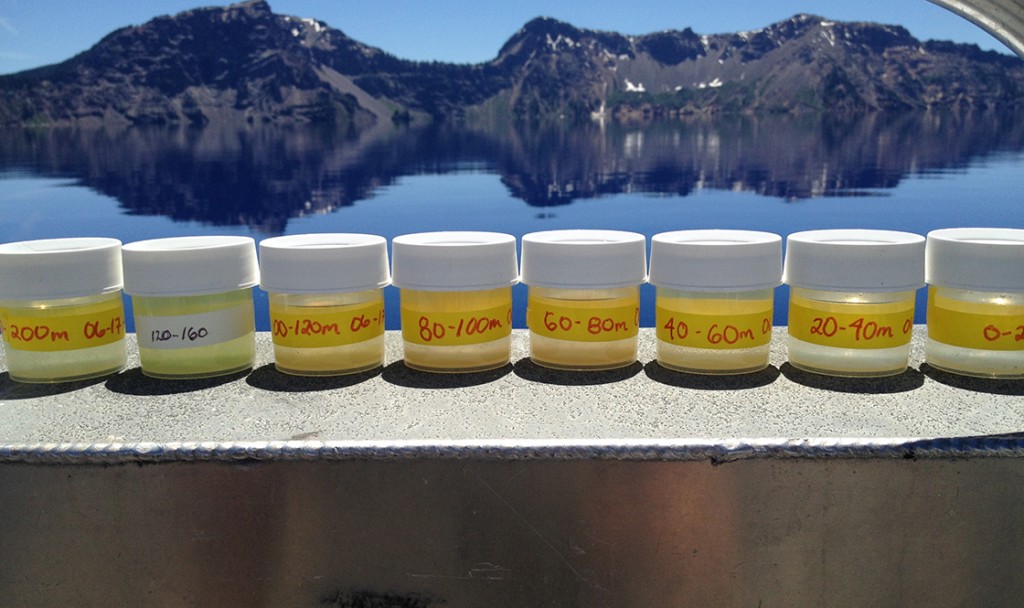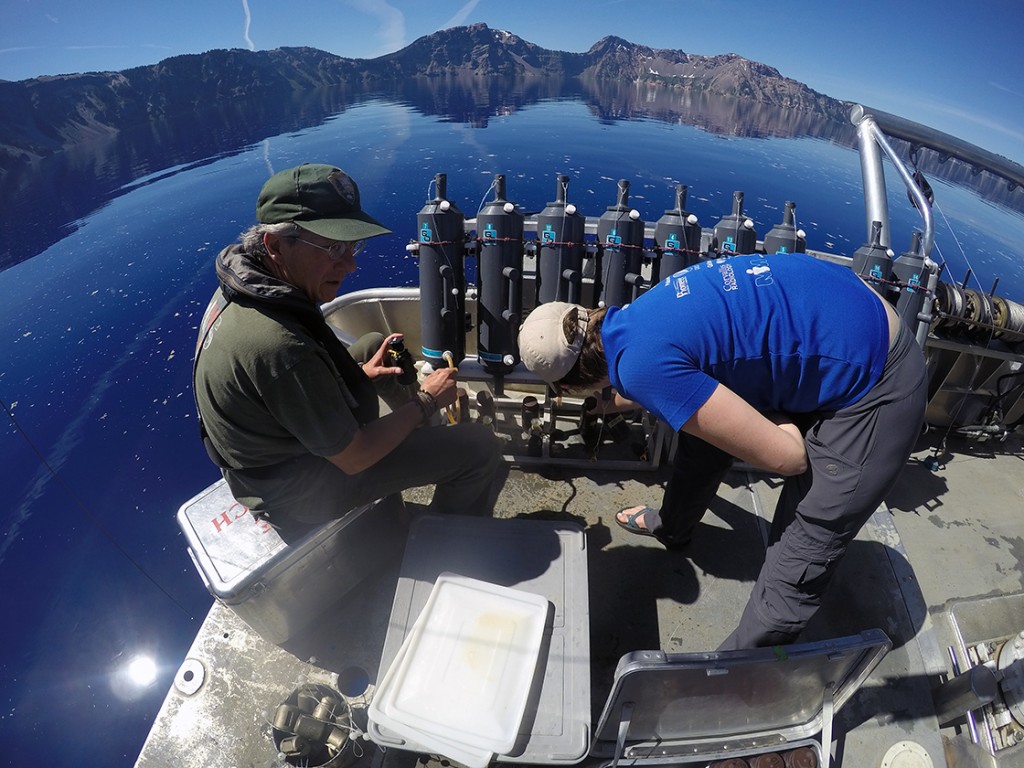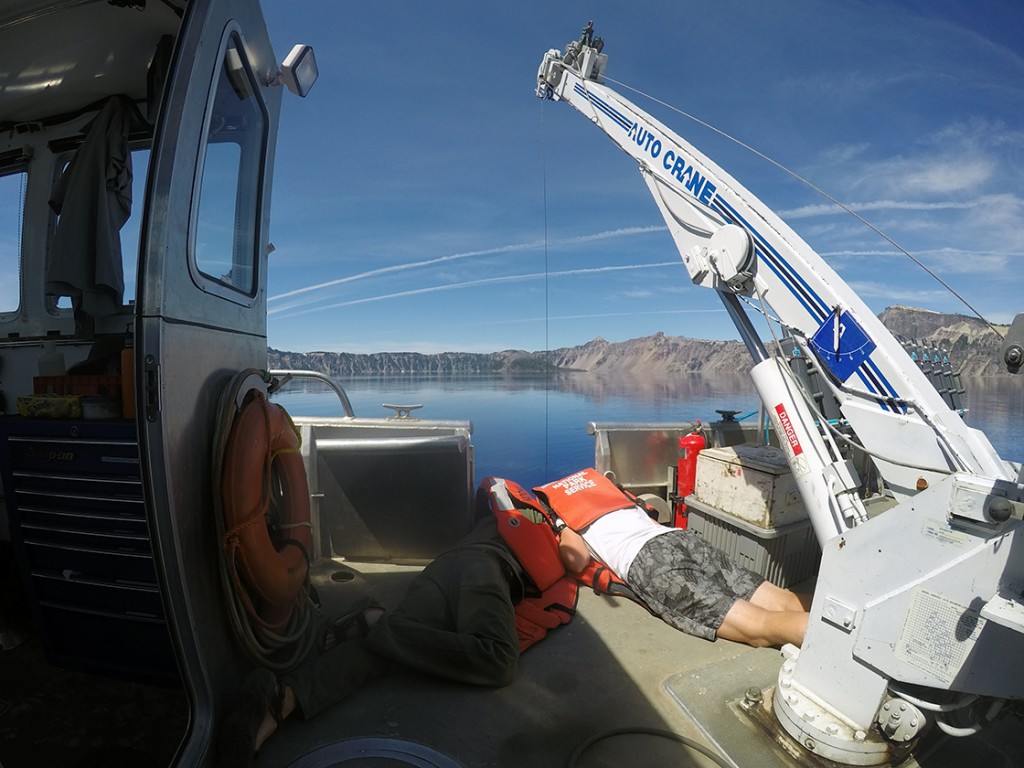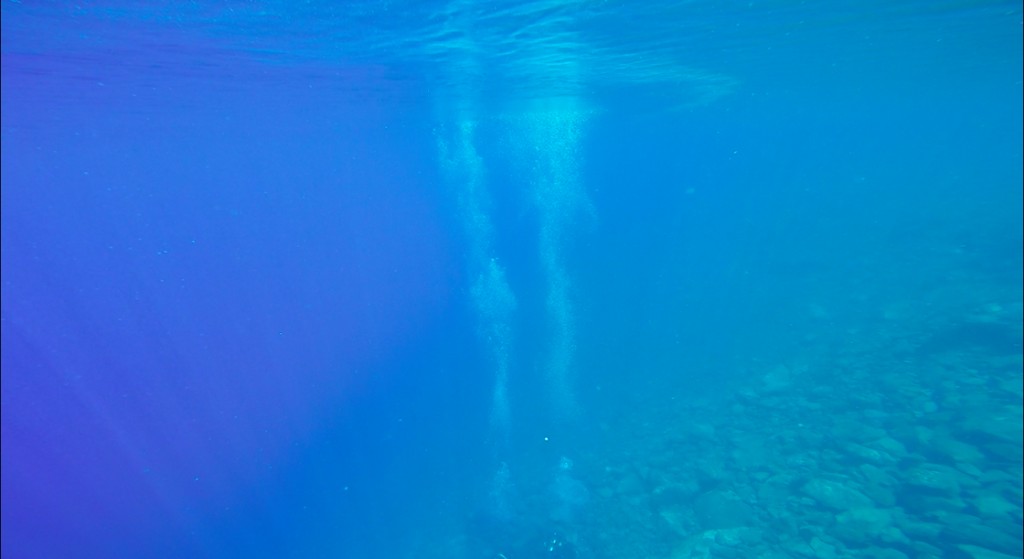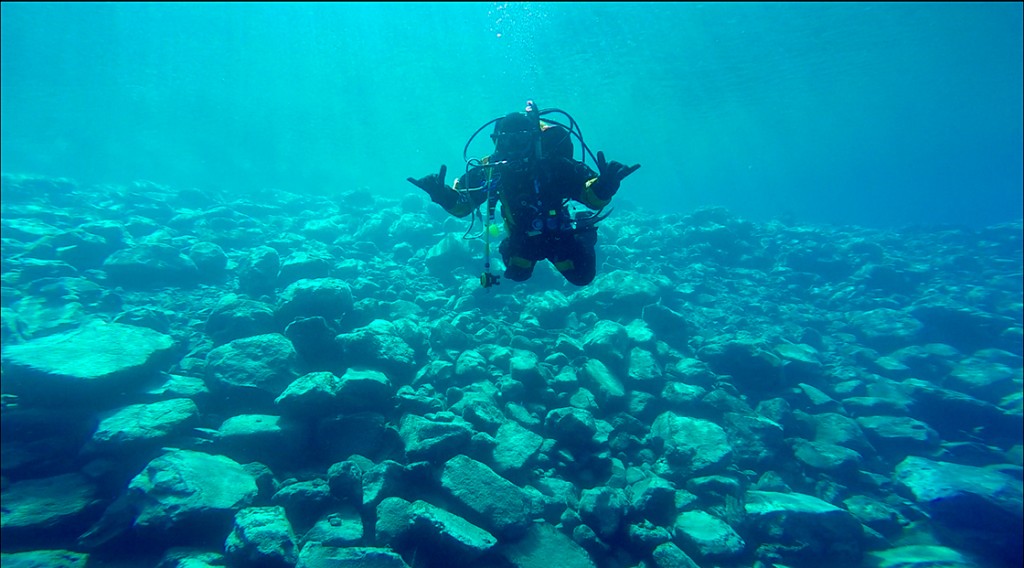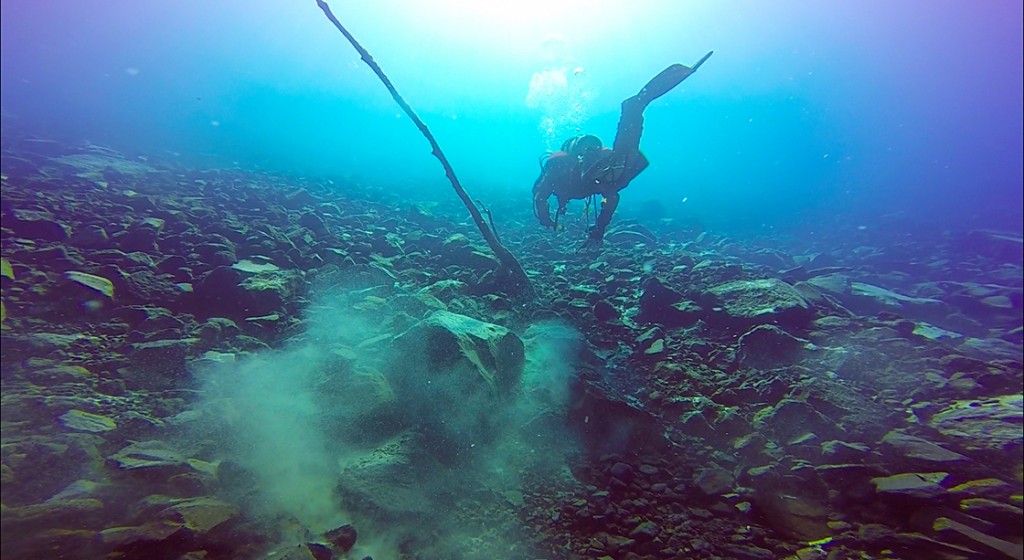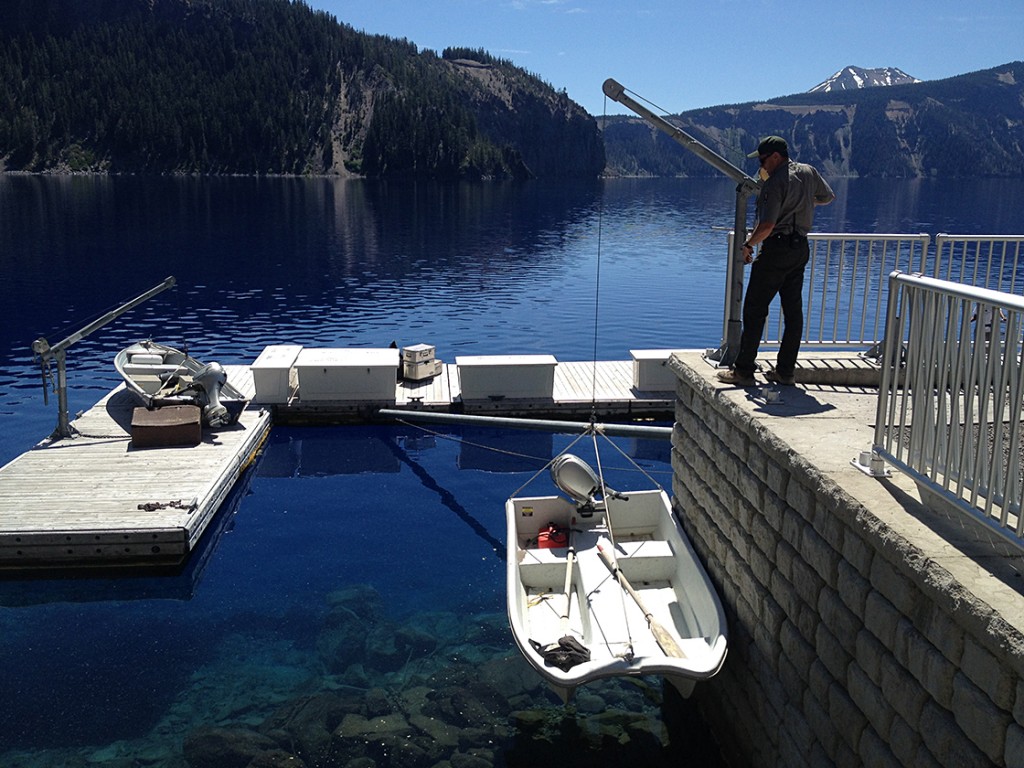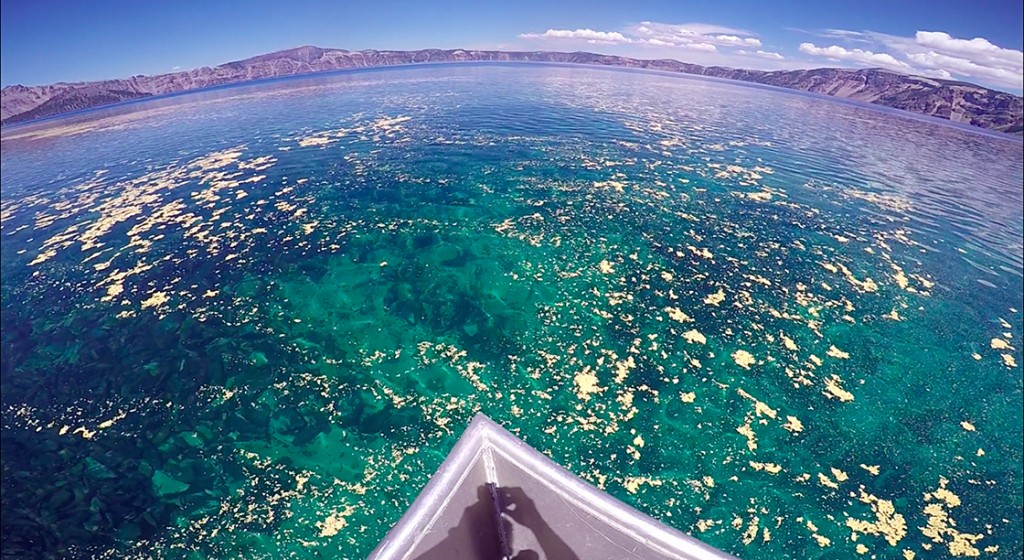After a quick weekend recovery, my gear still wet from the Channel Islands, I arrived in Medford, Oregon, just as the sun was setting. From there I drove up into the mountains, heading towards Crater Lake National Park. I’m sure the drive is gorgeous, but I didn’t make it to the Park until close to midnight. Fortunately, I was let in to my dwelling for the week just in time to crawl into my sleeping bag. By the good graces of the staff here at CRLA I was given a bed at the Science and Learning Center’s Residence. A restored historic build, once home to the Park’s naturalist, the SLC Residence serves as a living center for visiting scientists and artists. This beautiful old building is just another prime example of how the National Park Service manages the natural landscape, as well as historic sites; natural history, renovation and restoration.

Words cannot do Crater Lake justice, put pictures can get close. It’s incredible to think that this lake is less than 8,000 years old. Mt. Mazama, the name given to the mountain before it blew its top, was probably the tallest peak in the immediate area.
The next morning I met up with Scott Girdner, an aquatic biologist, and Kristin Beem, the seasonal aquatic technician. They told me we were headed down to the water, and I couldn’t wait. Because I arrived late in the night I hadn’t gotten a chance to see much of the park at all. As we drove around the rim, the caldera came into view. Words cannot do Crater Lake justice, but pictures can get close. We parked at the top of the rim; at the only place in the Park you can safely access the water. The Cleetwood trail zigzags down the steep wall of the caldera, down to the water below. I couldn’t believe that the Park Service, and any inquisitive visitor, has to hike down and up this trail everyday. Like every Park I’ve been too, each environment presents its own unique challenges. Here at CRLA, nobody complains about a little extra cardio.
- Another look at the Kubota. I certainly wouldn’t want to haul that gear down and then up the trail!
- There is only one way down to the lake from the caldera, the Cleetwood Trail. This winding set of switchbacks presents the Park Service’s aquatics team with a pretty big challenge in terms of hauling gear too and from the lake. The solution? A Kubota tractor!
- Each Park has its only unique circumstances it must overcome. At CRLA, gas is held in holding tanks at the top of the Cleetwood trail. If gas is needed, for either the tour concession or the Park’s boats, it has to be pumped down to a secondary pump house, and then cranked by hand to the hose on the dock. Here Kirsten is getting her pre-dive workout in!
As luck would have it, I picked an excellent week to visit the CRLA. Once a month the aquatic ecology team does what they call “Trend Week” i.e. they collect data to add to their long-term trend data set. That Monday we prepped the sampling gear for the week. Because this fragile ecosystem is at risk by potentially invasive organisms, recreational water use of the lake is extremely limited. In fact, the only watercrafts allowed on the lake are the Park Service’s two research boats, and a concession company that runs tours later in the season. Of course, visitors can swim in the lake, but with a chilling surface temperature of about 54º, most don’t stay in for too long.
We had the lake to ourselves as we sped out across the water towards Wizard Island, the prominent mini caldera on the western edge of the lake. The Park Service maintains a boathouse on Wizard Island, so it was there that we loaded the gear onto the boat. We then traversed to the middle of the lake, the sampling area called Section 13. We took a light reading and headed for home. Crater Lake is famous for it’s amazingly clear water, but I wasn’t prepared for what I saw. The astounding blue water belies the extreme depth below; at 592 meters Crater Lake is the deepest in the United States, and one of the deepest in the world.

Steaming back after our dive day, you could feel the excitement on board. More often than not the aquatics team doesn’t get the opportunity to do biological surveys on SCUBA. I was really appreciative to have been able to join them this day.
Things really got going on Tuesday, when we began our sampling in earnest. I got to meet Mark Buktenica, the Chief aquatic biologist who has been at the Park for over 30 years. We sped out to Section 13, and got to work. Most limnologists, those that study inland lakes and rivers, use relatively simple sampling gear, often dropping water collectors hand over hand into their study sites. But due to its size Crater Lake is in a class of its own, and I know oceanographic equipment when I see it and we were armed to the teeth with gear. We sampled water at different depths, collecting samples that would be analyzed for chlorophyll (signs of phytoplankton) and for water quality. A scientist from USGS typically accompanies the crew for trend week; he brought radioactive C14, which is used in a study to test the difference in photosynthesis and respiration in the lake. We also took samples from 5 spring sources to look for potential contaminants. I was thoroughly shocked when Scott and Mark took a secchi disk reading (used to determine visibility in the water column) down to over 38 meters! I’ve never even heard of water that clear.
- Things got pretty cramped on the Neuston once trend-week got into full swing. Water samples were analyzed for quality, contaminants, and phytoplankton productivity.
- After a day of dropping the plankton net into the water, this was the result. Notice how the color changes with depth. The darker, and richer the color, the more plankton are found within. Peak plankton concentrations typically hover at around 120 meters!
- As part of trend-week, water samples are taken at depth intervals all the way to the bottom. Unlike most limnology studies, the aquatics team uses oceanographic equipment to get their samples. Here Mark and Kristen extract water from the casks.
- During trend week Mark and Scott take Secchi Disk readings to evaluate water clarity. Scientists have used Secchi disks for this very purpose for centuries. But I for one have never heard of a depth reading of almost 40 meters, a typical occurrence at CRLA.
On Wednesday we continued our sampling by doing vertical zooplankton tows. We dropped our net and again took samples at different depths. The clarity of the water is due to the oligotrophic nature of the lake (nutrient poor) and because of that light penetrates very, very deep. All of that clear water doesn’t defuse UV radiation, so the inhabitants of the lake tend to live deeper than they do in the ocean. So deep in fact, that the main layer of phytoplankton, and zooplankton is found at about 120 meters. 120 meters! That absolutely blew my mind. I’ve never heard of the dominant plankton zone being that deep. Back home in California most of the plankton are found in the first few meters!

I know oceanographic equipment when I see it! This relatively large plankton net (by lake standards at least) was sent down at regular depth intervals to sample the water column for zooplankton.
While Tuesday and Wednesday afforded me my first taste of limnology, Thursday brought my dreams of lake diving to fruition. Diving in the lake has been restricted to Park Service personnel only since 2012, and typically Park Service divers use SCUBA on an as-needed basis. I was thrilled when Mark and Scott decided to try and do some biological surveys at depth. Back in the early 20th century the lake was seeded with trout, in an effort to attract more visitors. In order to feed the trout the lake was also seeded with crawfish. As it turns out the crawfish voraciously devour anything they possibly can, preying on and out competing a local species of newt.

In keeping with the trend, here is my over/under shot from CRLA. Blurry above, but clear below, the startling clarity of Crater Lake is reason enough to want to dive there. Plus, you don’t have to rinse your dive gear at the end of the day, a hose would only get it dirtier!
Traditionally the Park Service has done snorkel surveys for the newts and crawfish along the shore. But last year they decided to try the surveys at depth. Just my luck! I was paired up with Mark, and together we descended into the crystal clear water down to 60 feet. If you think diving in 54º water is cold, the temperature at 60ft was a bone chilling 44º! We each took a turn looking for newts for 20 minutes, at just over 6000 feet; a 60-foot dive is really a 90-foot dive in terms of nitrogen build up. Unfortunately we didn’t see anything at all at 60ft, and I was getting worried I wouldn’t see any newts. But we did another survey at 15ft, above the thermocline, and there life is much more abundant, we found several newts and a few crawfish. The next team of divers, Scott and Kristen, did their surveys at 45ft and 30ft. Again, a similar story, nothing below the thermocline at 45ft, but plenty of newts and crawfish at 30.

The villain and hero of the Crater Lake benthic ecology story. Originally introduced to feed the introduced fish back in the early 20th Century, these crawfish have established themselves as the dominant benthic predator. Unfortunately they have either out competed and/or predated upon the local subspecies of the rough-skinned newt, the Mazama newt.
- While Mark and I warmed up on deck, Scott and Kristen descended into the cold, clear water to survey for newts. What’s incredible is that you can plainly see the divers from this photo, taken from the surface, 45ft down!
- In order to search for newts, the aquatics team scrambles through the loosely consolidated rock. We did 2 time-constrained surveys across 4 depths (2 depths per team). It’s hard to tell, but this photo was taken at 60ft! And with 44º water at that depth I was happy to only be down there for 20 minutes!
- Mark Buktenica, CRLA’s aquatic biologist, has been at the lake for over 3 decades and yet he never gets tired of diving in the lake!
- After doing our time-constrained surveys for newts at 60ft, Mark and I ascended to 15ft to finish our transects. I still couldn’t get over how clear (and cold!) the water was!
- Crater Lake is closed to all recreational boating. Only a tour concession and the Park Service have access to the lake. But that doesn’t make any of their challenges easier. In order to preserve the scenery, the Park Service keeps their boats moored around the corner from here, which means we had to launch this little outboard every day in order to get to the big boats.
- Crater Lake is famous for it’s incredibly clear water. The surface of the lake sits at about ~6800ft, while the caldera is about 700ft above it. That means that the only sources of input into the lake are by rainfall and snowmelt from the rim.
Like other at other Parks, the aquatic team at CRLA works four 10-hour shifts, and as we sped back over the lake after de-suiting, I reflected on the priceless experience of sampling and diving in Crater Lake. On Friday I was on my own to explore this incredible Park. It’s hard to get any scale at all; the lake is about 6 miles wide and holds about 19 trillion gallons of clear, freshwater. This relatively young lake, less than 8,000 years old, quickly filled with water after what must have been an absolutely massive volcanic eruption shook the land. My inner geology nerd came out, as I ooed and awed over the incredible landscape in front of me. But I won’t bore you with the details.

I couldn’t help but take a few fun photos on my dive with Mark. His enthusiasm and passion for the ecology of Crater Lake is infectious. Plus, we had matching dry suites.
It was really a bizarre experience to leave the remoteness of the Channel Islands for the hustle and bustle of Los Angeles, only to find myself in the secluded alpine playground of Crater Lake. This Park only attracts about 500,000 visitors a year, but words cannot describe the splendor of this stunning, yet fragile ecosystem. My visit to CRLA was made all the better by Mark, Scott, and Kristen. For now I’ll enjoy the chilly alpine air, before I take off for Biscayne National Park in Miami, Florida. I’ll be sad to leave this place behind, but a little warm water will be a nice change of pace.
Thanks for reading.

